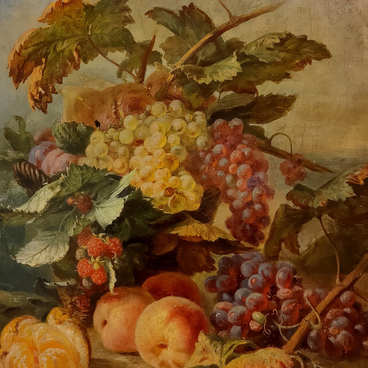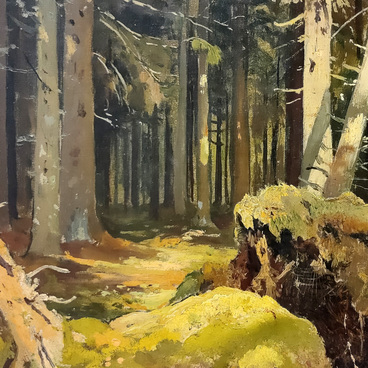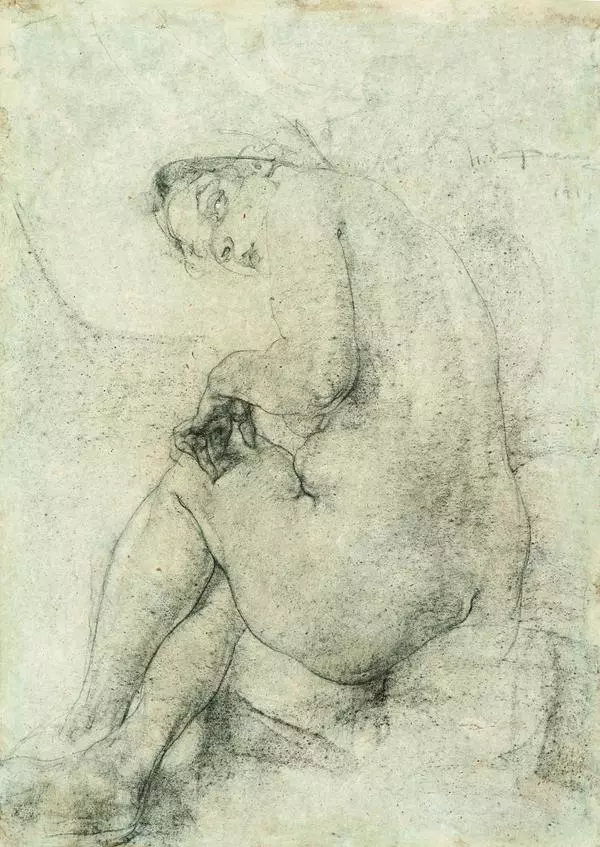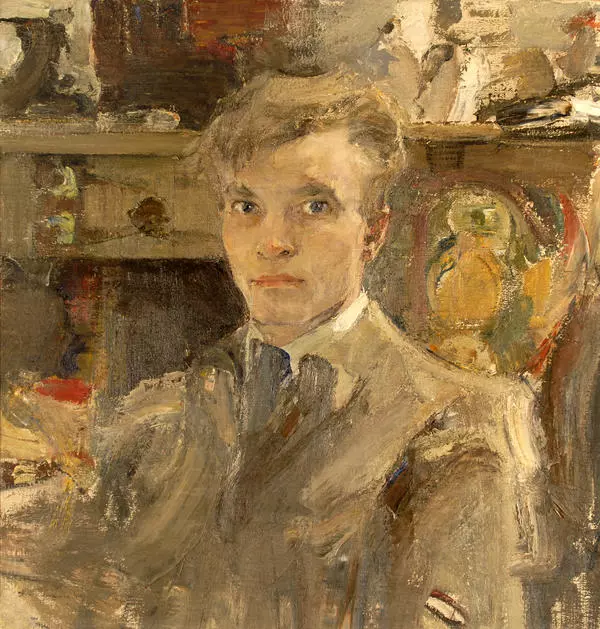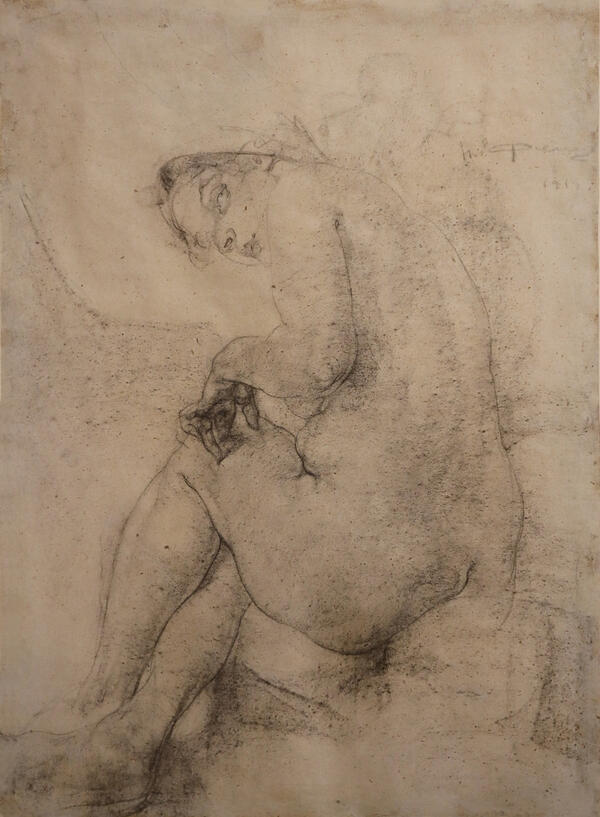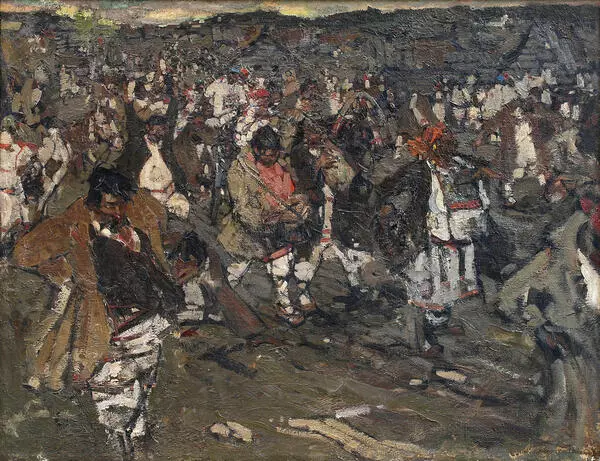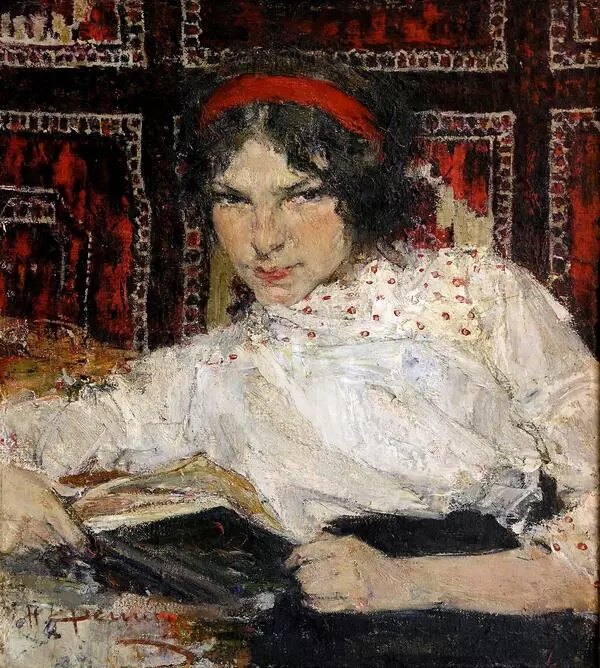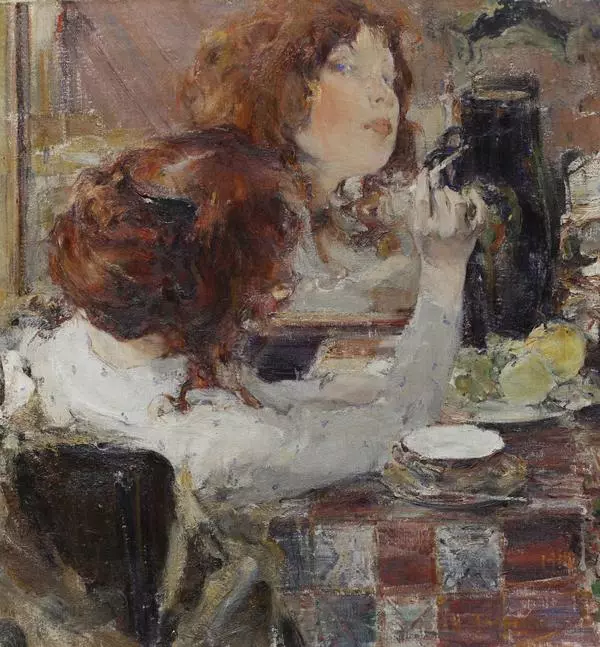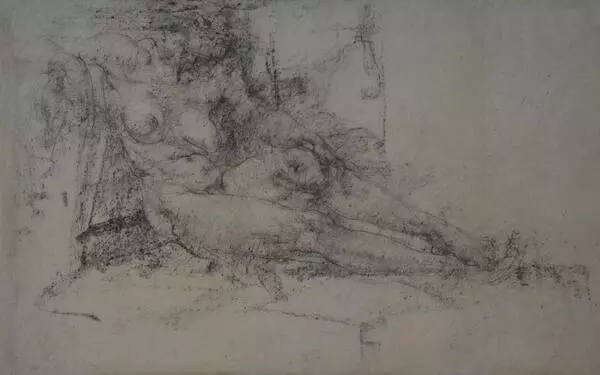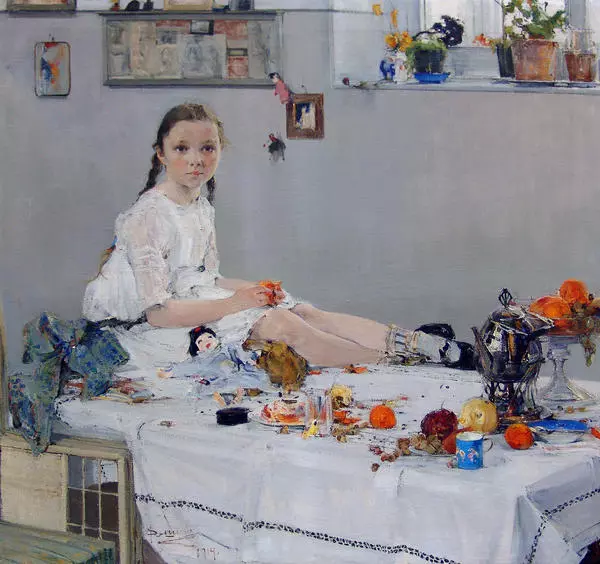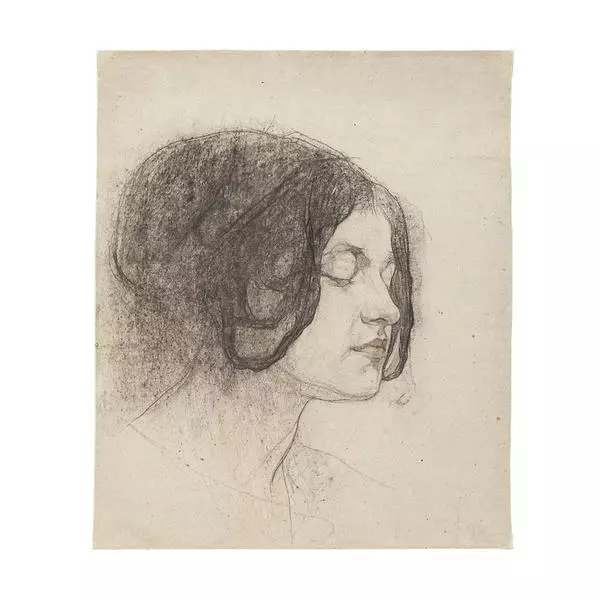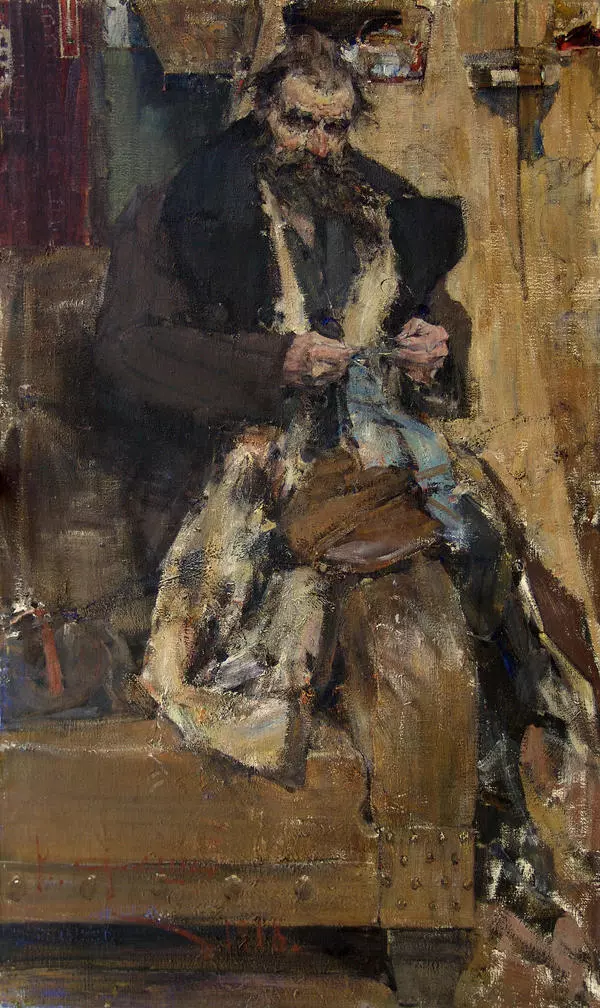Nikolai Feshin painted ‘A portrait of a Man, ” in the 1920s. He applied oil paint on the canvas using the impasto method. The term “pasty” comes from the Italian word “pastoso” — “pasty”. This is what they call the method of applying paints in thick layers onto the canvas, which particularly protrudes above the surface. Nikolai Feshin often painted in this manner.
The artist portrayed a noble man with a mustache and a wedge-shaped beard. The man’s sharp gaze is precisely directed at the viewer. The artist was able to convey the appearance of a man using freestyle brush strokes: an elongated face, an uncovered forehead, a thin aquiline nose, and short dark hair. The artist drew a white collar outlined with a black stripe on the neck of the man.
Nikolai Feshin was born in Kazan in 1881. His father owned a gilding workshop there. Young Nikolai immediately showed promise in art, and was sent to study at an art school. After that, he enrolled into the Academy of Arts in St. Petersburg and studied under the artist Ilya Repin. People believe it is from him that Nikolai Feshin learned the wide free brush stroke technique. With the foundation he learned from his master, he later developed his own artistic style.
Nikolai Feshin experimented with materials and created his own thick coat of prime instead of using ready made oil. He later deliberately limited the palette to a few specific colors. By the 1920s he had already established his own style. Feshin himself described it like so: ‘Personally, I have always tried to express the theme technically, building the work based on technical production much like an expert musician and less like a composer.’ Art critics usually characterize the work of Nikolai Feshin to that of Nouveau style art and indicate that he used techniques influenced by impressionism.
After the revolution, the artist moved to the U.S.A. He lived in New York and in Taos, New Mexico. In Taos, Nikolai Feshin built a house with a studio especially for projects and decorated it with neo-folklore carvings. He travelled to Mexico and Japan, conducively working in different genres. The artist left large cycles of bright ethnographic sketches, which were widely known as secular portraits. In 1981 in his hometown of Taos, an institute was named after him and a museum and an educational center were founded in his hometown of Taos.


